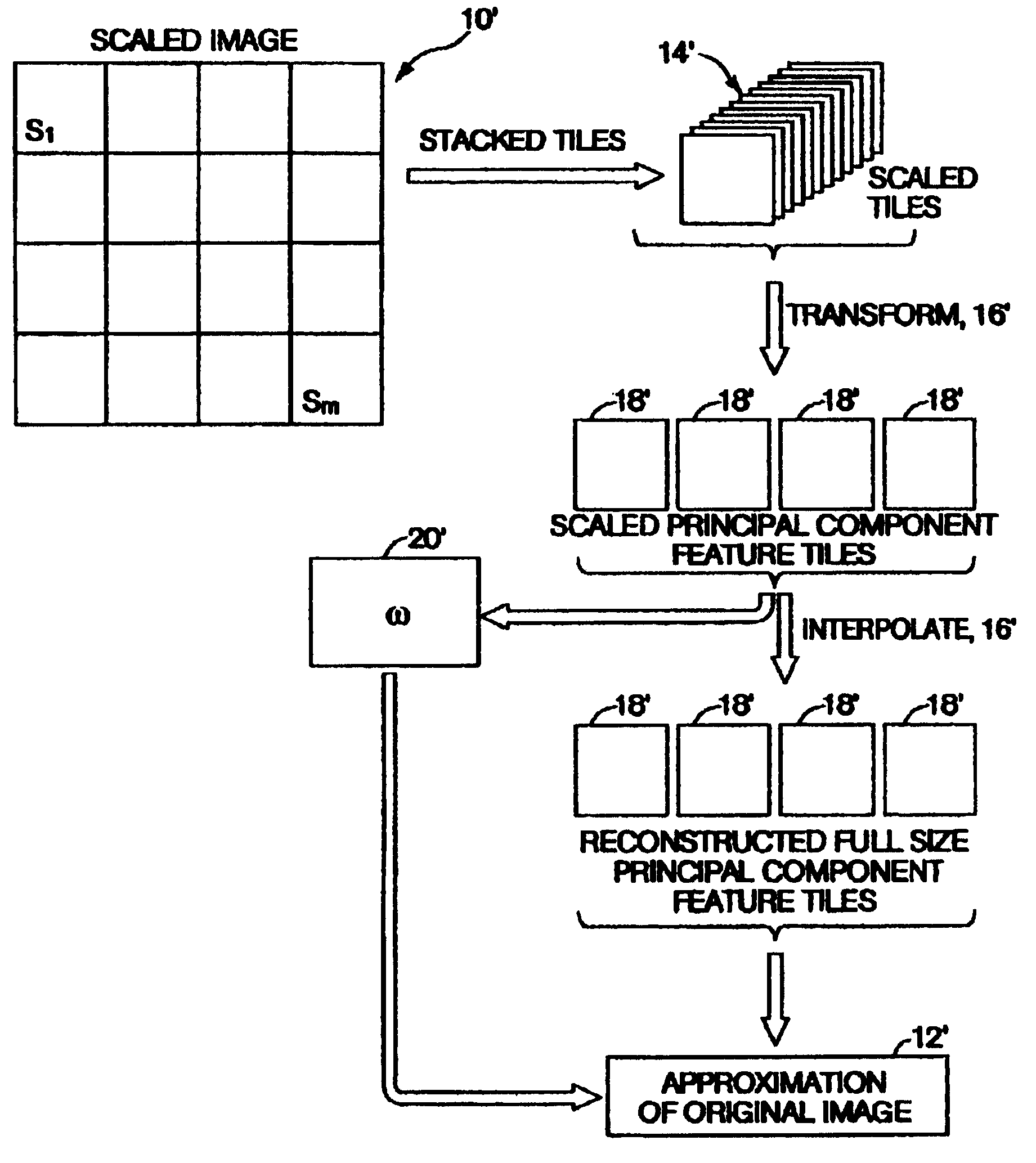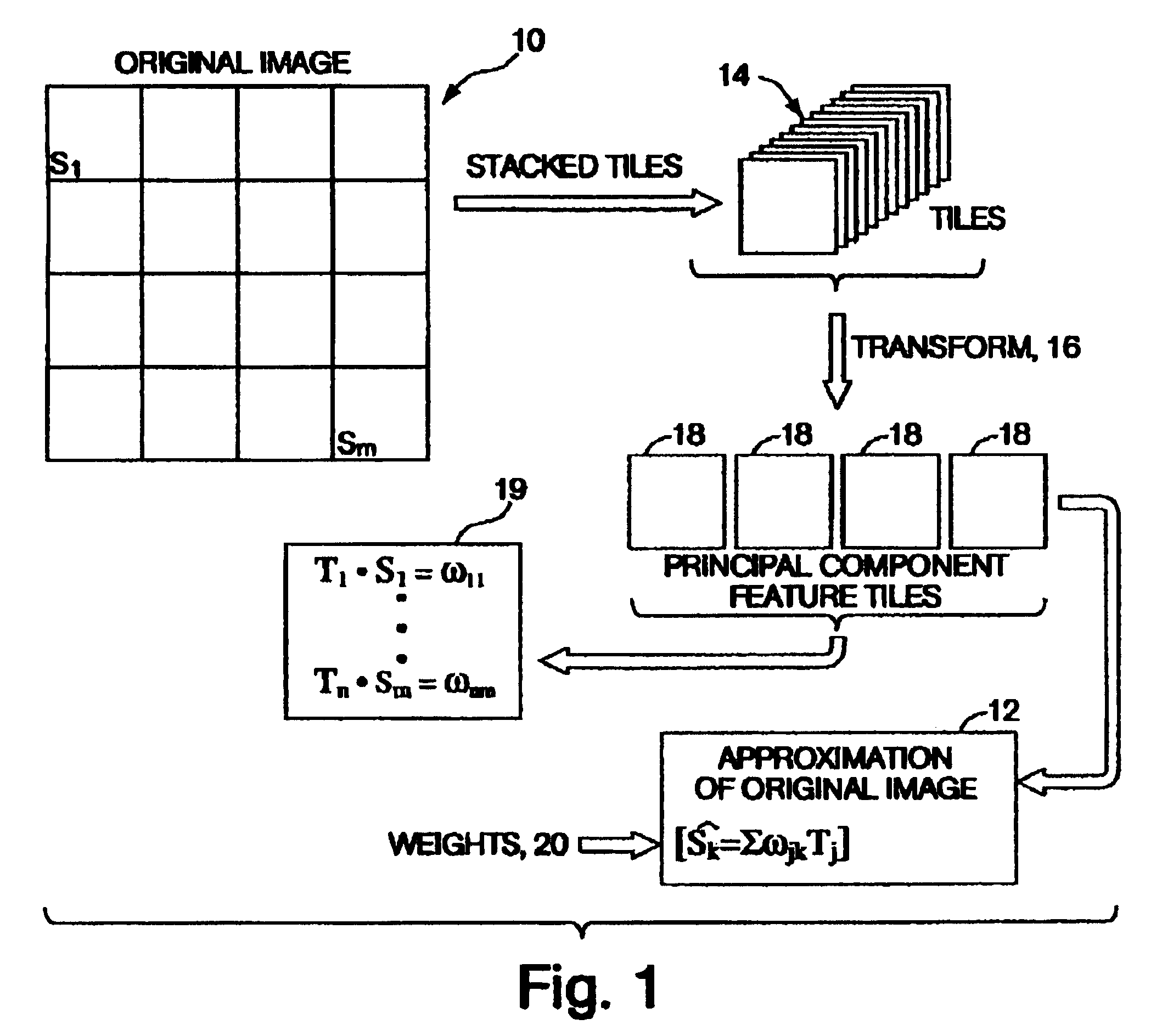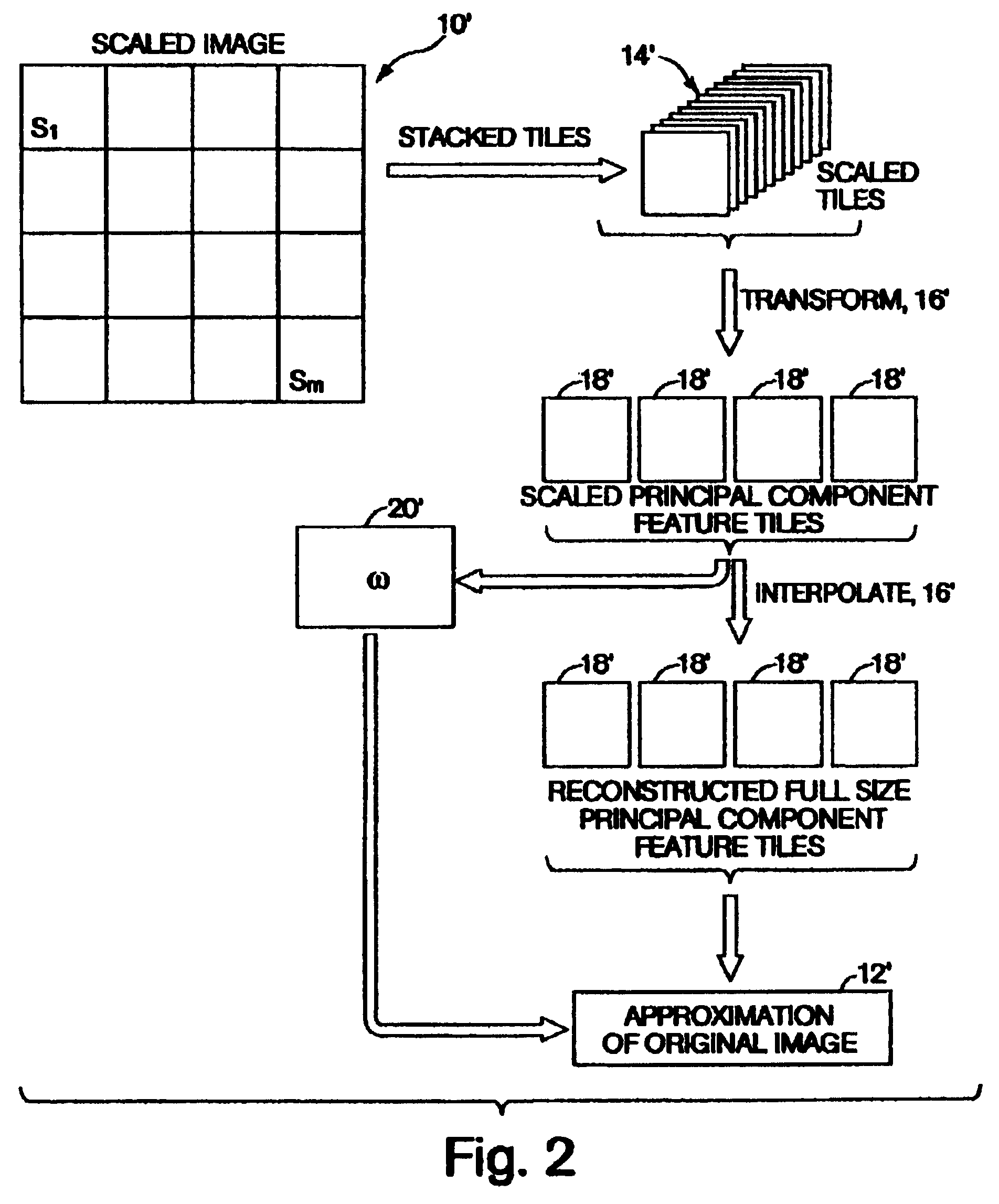Computationally efficient modeling of imagery using scaled, extracted principal components
a scaled, computationally efficient technology, applied in computing, instruments, electrical appliances, etc., can solve the problems of inability to handle voxels, fixed basis of jpeg and others cannot handle the expanded feature set associated with hyperspectral imagery, and standard compression has not been thought suitable for principal component image modeling and compression, etc., to reduce computation and the number of bits required, the effect of reducing the overhead of the computer
- Summary
- Abstract
- Description
- Claims
- Application Information
AI Technical Summary
Benefits of technology
Problems solved by technology
Method used
Image
Examples
Embodiment Construction
[0029]Referring to FIG. 1, modeling and compression of an original image 10 is illustrated in which after the subject process is performed an approximation 12 of the original image is generated. The original image is divided up into 1−M segments with each of the segments being reflected in a different tile 14, with the tiled being shown as stacked. These tiles are of the same scale as the original image.
[0030]In order to extract principal components relating to features of the image, a transform 16 is applied to tiles 14 which results in a reduced set of tiles 18 referred herein as principal component feature tiles. These tiles are utilized to characterize features in the original image with the transform being one of a number of transforms which extract principal components. As mentioned hereinbefore U.S. Pat. No. 5,377,305 incorporated herein by reference and assigned to the assignee hereof describes a neural network technique for deriving principal components.
[0031]The principal ...
PUM
 Login to View More
Login to View More Abstract
Description
Claims
Application Information
 Login to View More
Login to View More - R&D
- Intellectual Property
- Life Sciences
- Materials
- Tech Scout
- Unparalleled Data Quality
- Higher Quality Content
- 60% Fewer Hallucinations
Browse by: Latest US Patents, China's latest patents, Technical Efficacy Thesaurus, Application Domain, Technology Topic, Popular Technical Reports.
© 2025 PatSnap. All rights reserved.Legal|Privacy policy|Modern Slavery Act Transparency Statement|Sitemap|About US| Contact US: help@patsnap.com



